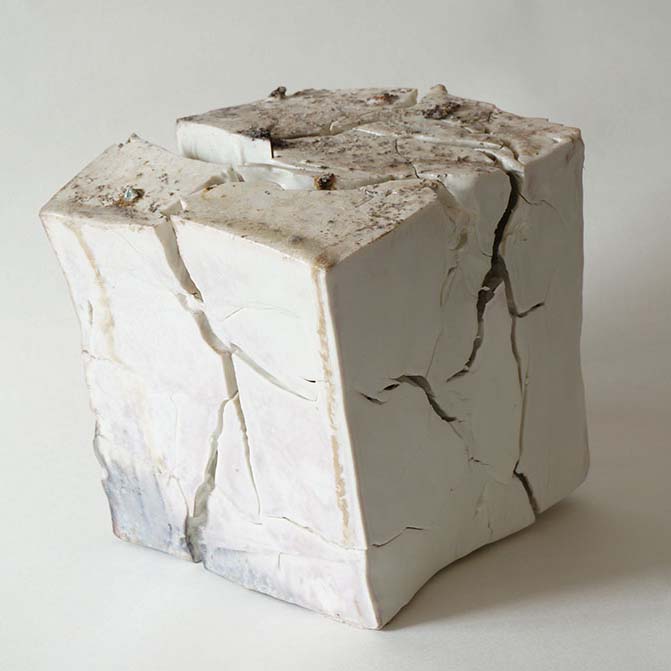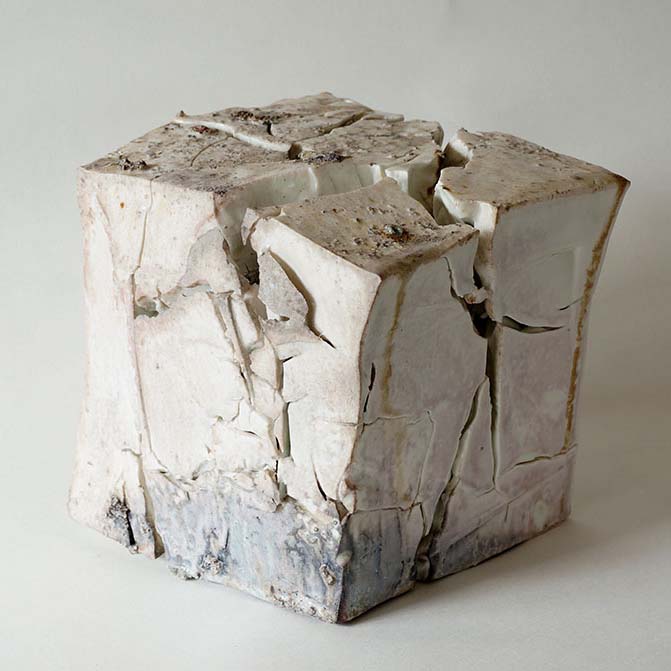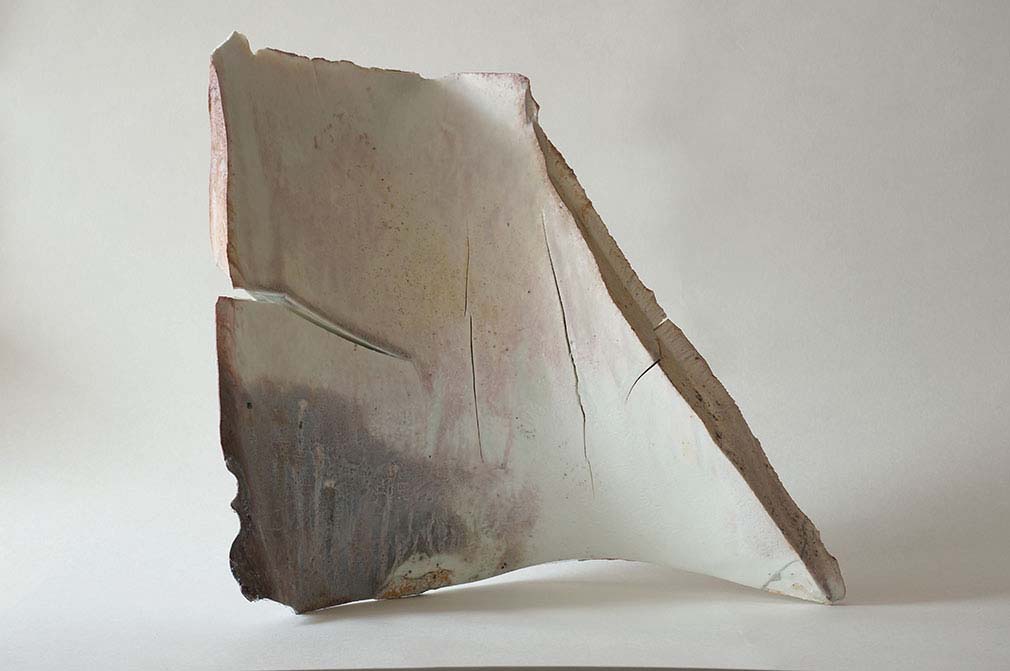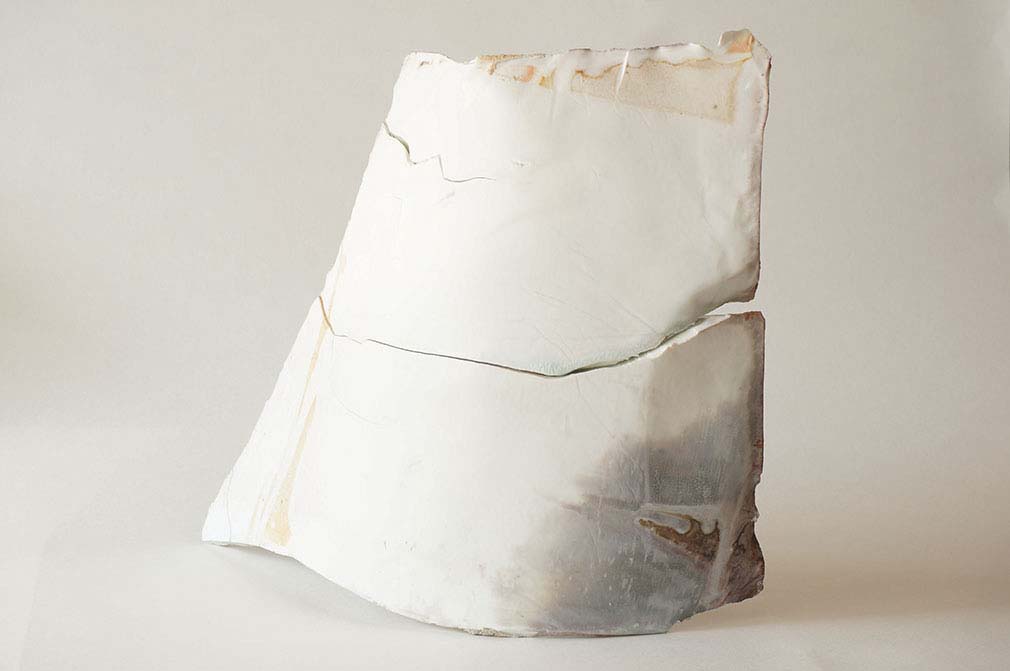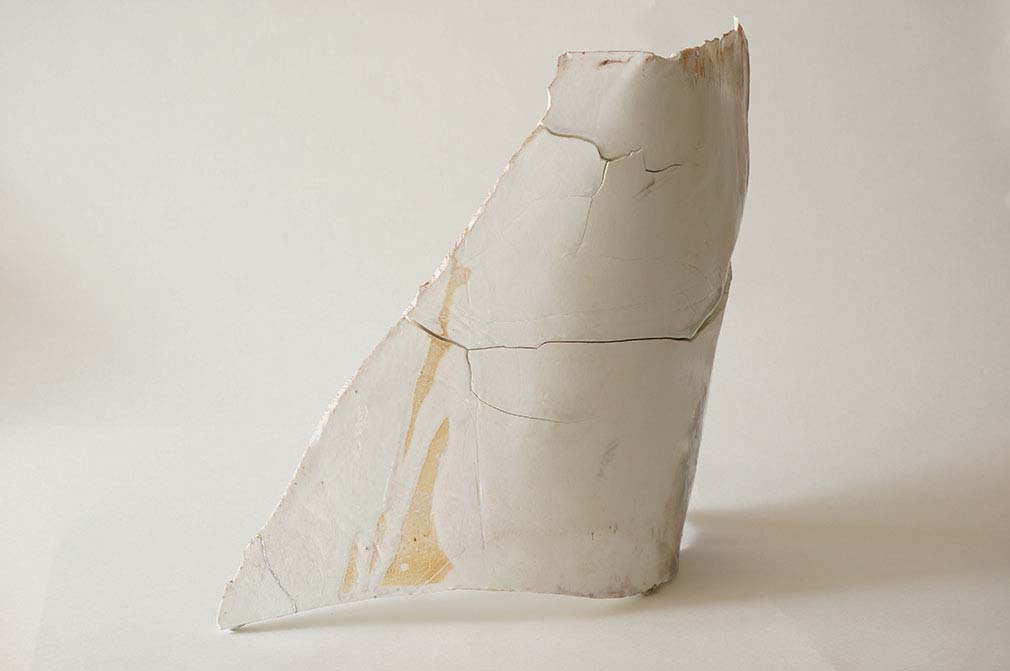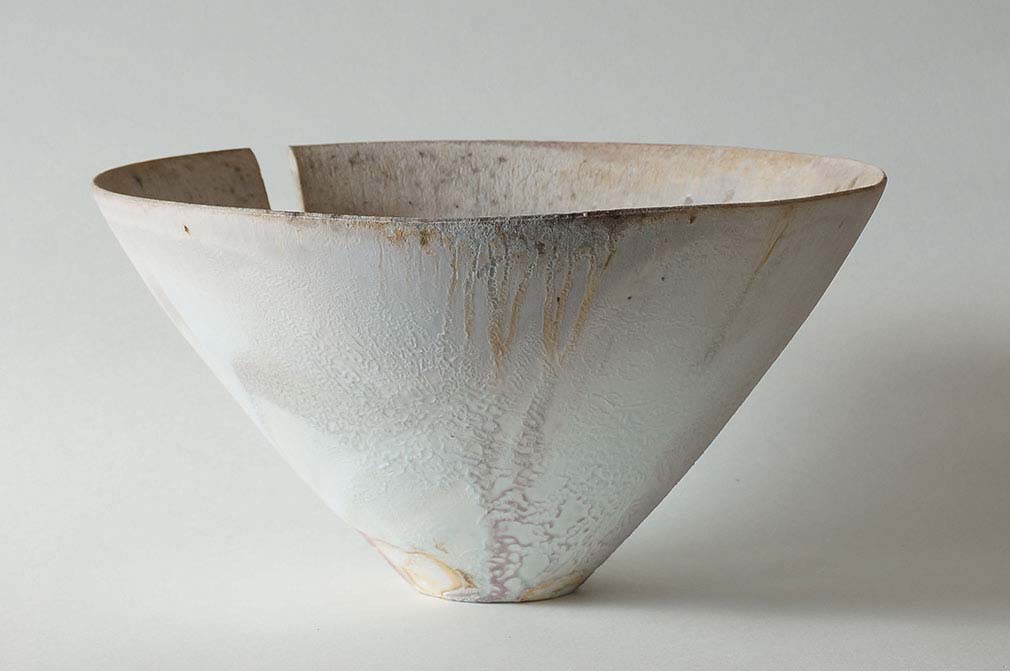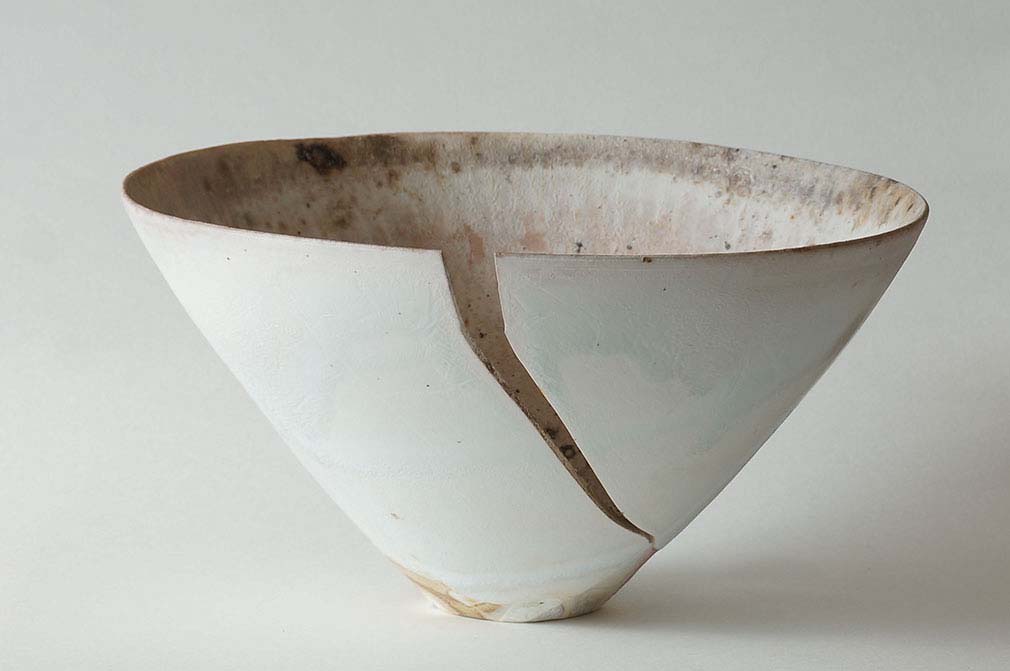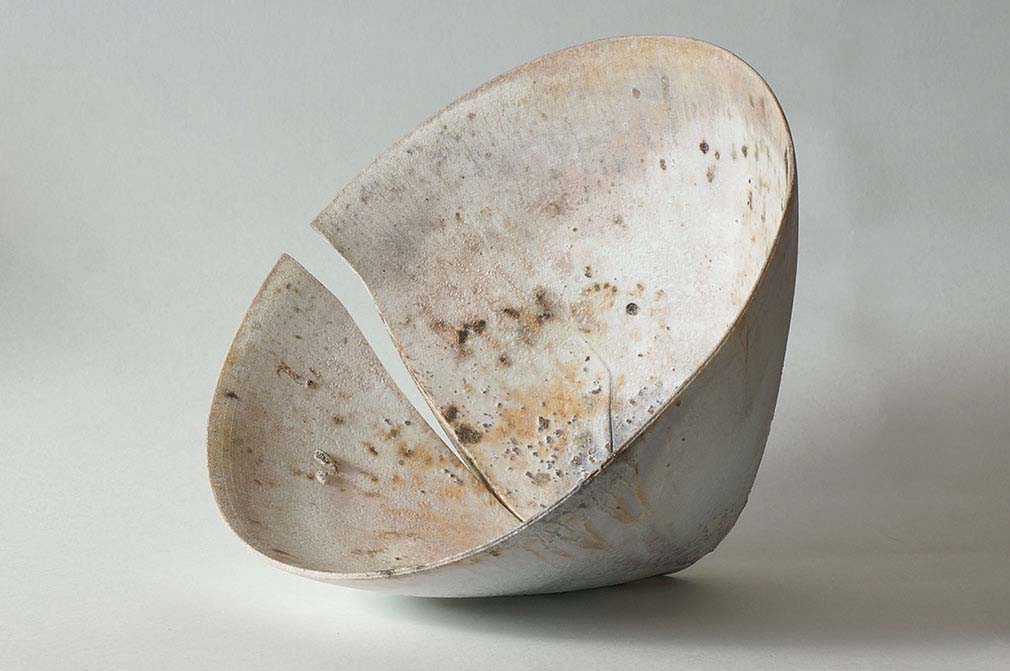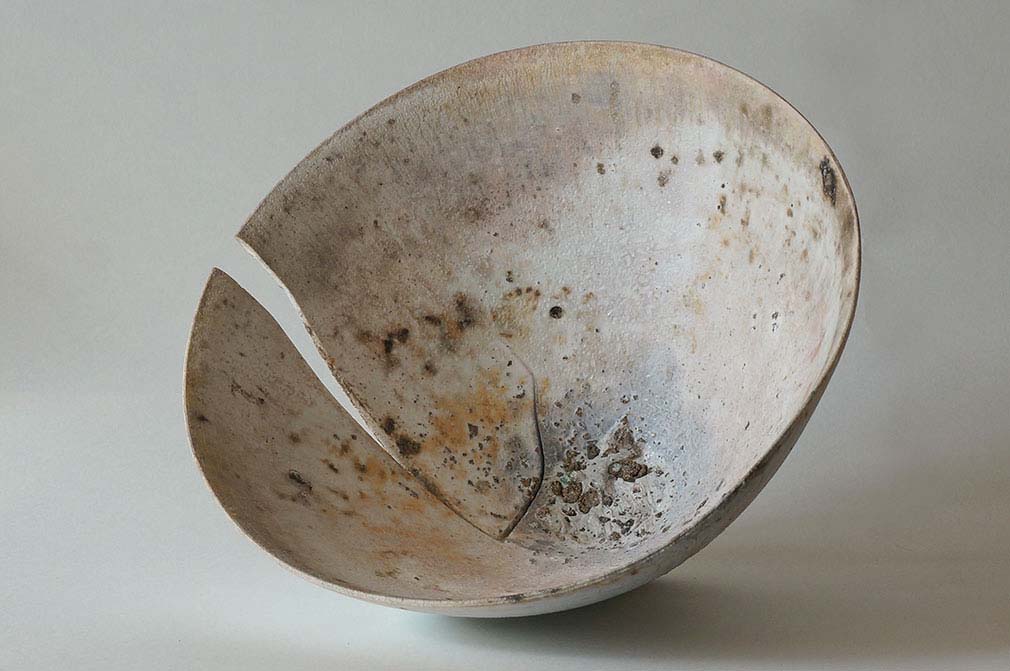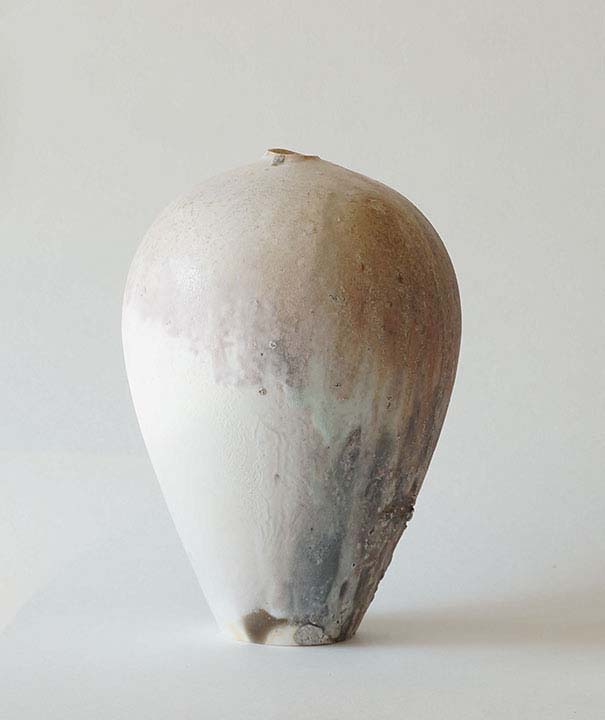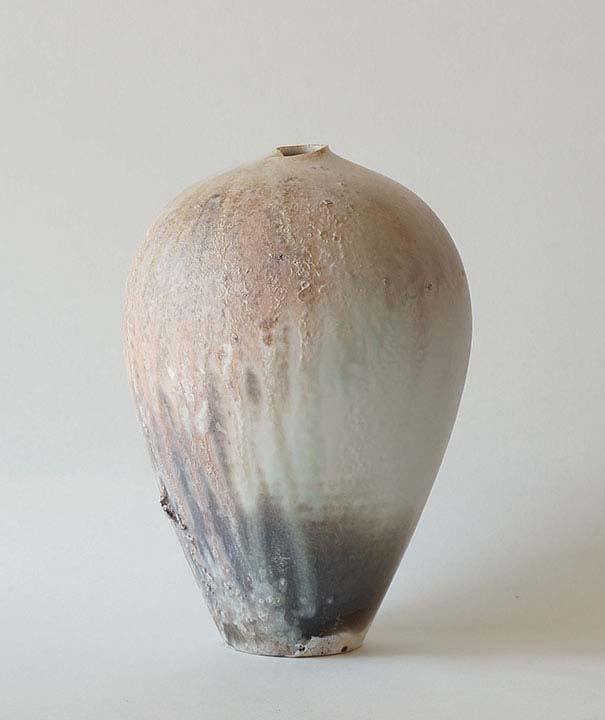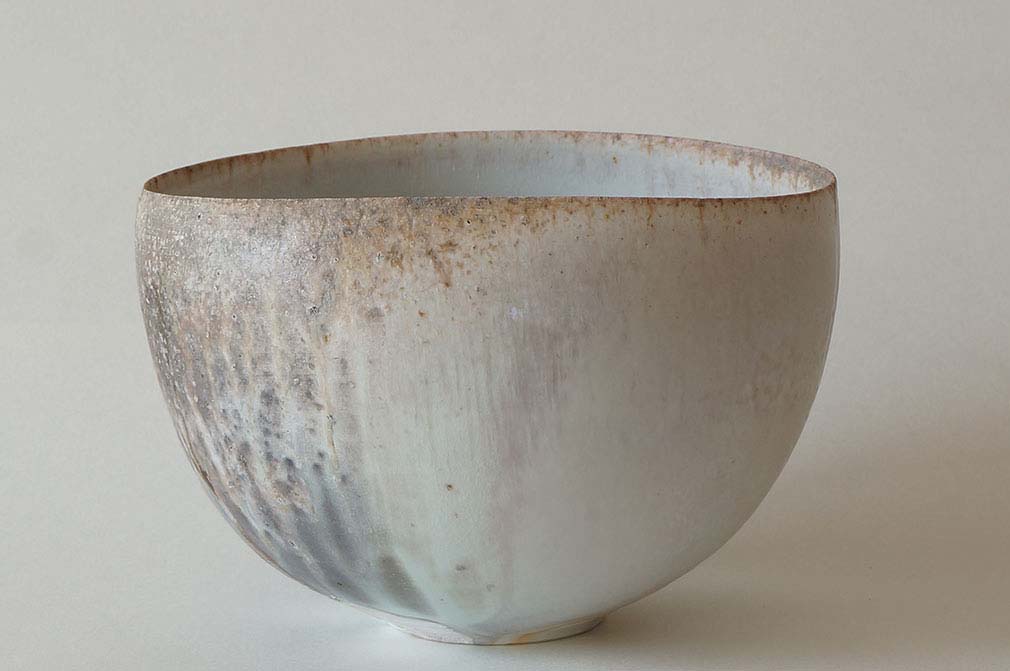Wood-fired White Porcelain
Introduction by Keiko Fukai
For a while after graduating from Osaka University of Art in 2000, TABUCHI Taro was primarily firing his porcelain sculptures and vessels in a gas kiln at his studio in the countryside of Kagawa Prefecture. Increasingly he was interested in making a significant change—building and firing his work in a wood-fired anagama kiln, which he completed in 2007
After a lengthy period of trial and error, he finally began to get the results he sought—beautiful accidental surface patterns and colorations created by the falling ash, fire and smoke inside the wood-fired kiln.
Among only a few other Japanese ceramic artists, this unique wood-firing of white porcelain is what now distinguishes Tabuchi’s work.
For this first online exhibition of TABUCHI Taro’s work, we have created a brief film that illustrates his processes of throwing, hand building and firing, and on his exhibition page we illustrate five of his most recent works– two sculptures and three vessel forms.
What I think is distinctive about my work in white porcelain clay is that it is fired in a traditional wood-fired kiln without protection. While most contemporary ceramic artists in Japan now fire in gas kilns, I am obsessed with wood-firing and its challenging possibilities.
Wood-firing produces accidental colors and patterns on the surfaces from the falling ash and smoke and can be somewhat controlled by the placement in the kiln and the exposure to the fire. These unpredictable, unintentional results are, to me, the most fascinating aspect of wood-firing.
At the beginning of the 17th century the use of white porcelain clay was introduced into Japan from China and evolved into a distinctive Japanese ceramic style in the kilns of Imari and Arita, among others. Because these porcelains were appreciated for their pure, white surfaces (that lent themselves easily to surface decorations) they were fired in saggars (closed ceramic containers) to protect the ceramics from ash and debris. These immensely popular Japanese porcelains have been fired in wood-fired kilns for centuries.
However, I began to feel that these traditional methods of firing defeat a more thrilling possibility of white porcelain—accidental surface patterns. To me these unintentional ‘designs’ are similar to ink paintings on white paper or canvas. Therefore, I built a primitive style anagama kiln in my yard for wood-firing. After a long period of trial and error, I began to see the beginning of the results that now characterize my work.
Critical to the beautiful surface patterns from the fire and ash are the delicate balance of the kiln temperature, length of firing, clay, glaze and the wood used for firing. It is this balance that produces the pink, purple and yellow colorations on my work.
In Japan, such random surface patterns on ceramics are called keshiki (scenery ). From one’s own sensibilities one can see among these unintended patterns aspects of the natural landscape—mountains, forests, sky, sea. And if people have this experience with my work, I am, indeed, pleased.



